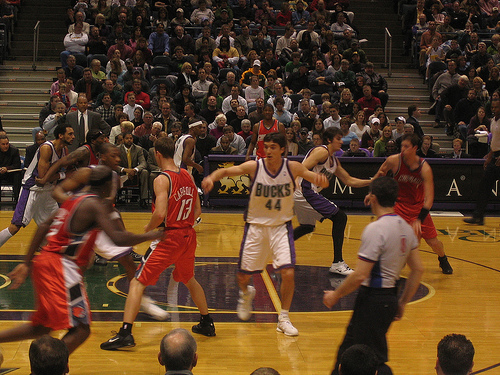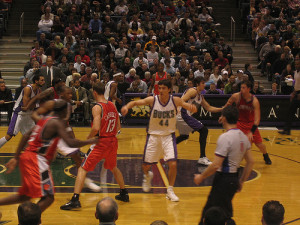Your Zone Offense stops Working in a Game! What do you do…

For many teams having a Zone Offense is just part of a good plan in preparing for all the challenges of a game situation. In some circumstances, teams might even have two or three different offenses, or variations of offenses to deal will all the possible zone defence challenges anticipated. So what is to be done when all of these options come up short against a zone defence? What is a coach and team to do in these situations…
When things seem to be hitting a wall and nothing is working reflect back on these principles of play to try and find the fix.
Characterise the Zone Defence
Reassess what type of Zone Defence the team is facing. Analyse the formation, where offensive space is on the court, where are the seams in the zone defence and where should players should position themselves at the start of the offense.
Varying the position of players before the zone offense starts can increase the gap or seams in the zone defence. This might be all that is need to create just enough space in the defence for good scoring opportunities to be created. It should be noted that within most offense’s players can be shifted marginally so not to affect the overall movement or flow of the offense.
If the zone offense is the right one to be matched against the defence then look to what other reasons might be contributing to the poor execution of the offense/offensive output.
Vary the tempo
When facing a zone defence sometimes a team can try to take the first opportunity that presents itself. Regardless of if, this is within the players shooting range. After successive missed opportunities, this can create pressure both for the individual and also for the team. In these instances, the offense should be slowed to allow players time to find the right shooting opportunity for themselves and the team as a whole.
One option to slow the offense is to ask players to utilise fakes when they have the ball in their hands. Upon catching the ball players should square up to the basket, using a shot fake or jab step to create space and engage the defender so to slow the offense without stalling it.
Another option is the speed up the offense by looking to place more importance on finding a shot during the fast break, primary or secondary transition phases. Sometimes expressed as an eight-second offense this does not allow the defence to set-up and find its normal structure.
Move on Passes
Because of the nature of a zone defence, when the ball is passed into or around the keyway the individual defensive players tend to collapse towards the ball. This clogs the possible options of the interior player and assists with the defenders being able to play an over active role in help defence.
To combat this situation and turn this stifling type of play into an advantage the offense, players who after passing into the post (high or low) must relocate to space for catch and shoot opportunities. If the shot is within the players range and they are well prepared with good foot position and balance then these shooting opportunities can be very effective in forcing change in a zone defence.

Focus on Screeners as Targets
Within most types of zone offense screening is used as a feature for players to break from of their defender or create space to work within. When a zone offense is working well the main aim is for the cutter to be the intended primary scoring target. However, if an offense starts to misfire then often the screener can become a much utilise option to help create points.
For interior players this might see the screener sealing on the screened player. Another option is for the interior player to screen away from the ball and establish a good position so when the ball is reversed they are a good target.
For perimeter players screening can lead to screen and pop, or screen and fade situations where being two passes away from the ball when setting the screen allows for the defence to be pulled away from their position on the floor enough to create a well-timed, uncontested shot.
Freeze and Gap Dribbling
Another option when reviewing a team’s failing zone offense is to look to the technique of using gap or freeze dribbles to condense the defence into certain sections of the half court so other areas become more open.
Two well-executed freeze or gap dribbles in a row on the perimeter will always lead to an open shot or interior scoring opportunity away from where the first dribble was taken. For example if the ball is first utilised in a freeze dribble situation on one wing, then the player who is two passes away will eventually have a scoring opportunity. Provided the players between them and ball utilise a freeze or gap dribble to condense the defence.
A well prepared zone offense is not guarantee of scoring opportunities being easy to come by. Nevertheless, a well-drilled team will be able to adapt to the challenges faced and vary their style of play enough to find a rhythm again.

